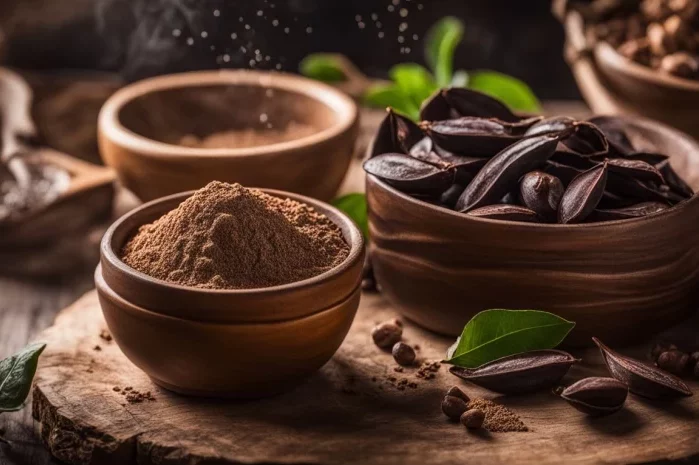In the vast landscape of culinary curiosities, few phenomena provoke as much intrigue and bewilderment as the enigmatic pickle tree. Conjuring images of briny fruits hanging from verdant branches, the pickle tree sparks imaginations and tantalizes taste buds. But what exactly is a pickle tree? Is it a product of whimsical folklore or a botanical marvel awaiting discovery? In this exploration, we delve into the depths of this peculiar concept, uncovering its origins, dissecting its myths, and pondering its potential.
Origins and Evolution
To grasp the essence of the pickle tree, one must journey back through the annals of culinary history. While the notion of a tree yielding pickles might seem fantastical, its roots are firmly planted in cultural traditions and agricultural practices.
Historically, pickling has been employed as a method of food preservation for centuries, dating back to ancient civilizations such as the Mesopotamians and the Egyptians. The process involves immersing foodstuffs in a brine or vinegar solution, effectively extending their shelf life and enhancing flavor. Among the myriad of items subjected to pickling, cucumbers reign supreme, evolving into the quintessential pickle.
The association between cucumbers and pickling laid the groundwork for the emergence of the pickle tree mythos. As the lore goes, the pickle tree purportedly bears ripe pickles ready for plucking, eliminating the need for laborious pickling processes. While fantastical in nature, this concept resonated with societies where pickles held significant cultural and culinary importance.
Myth vs. Reality
Despite its pervasive presence in folklore, the pickle tree remains a figment of imagination rather than a botanical reality. Cucumbers, the primary ingredient in pickles, originate from the Cucurbitaceae family, characterized by sprawling vines rather than towering trees. Furthermore, the intricate process of pickling demands human intervention, from cultivation to preservation, rendering the concept of a self-producing pickle tree implausible.
However, the myth of the pickle tree endures, perpetuated by cultural narratives and playful imaginations. Its whimsical allure adds a dash of magic to culinary folklore, serving as a testament to humanity’s penchant for weaving enchanting tales around everyday phenomena.
Culinary Significance
Beyond its mythical connotations, the pickle tree symbolizes humanity’s ingenuity in harnessing the bounty of nature to satisfy culinary cravings. Pickles, cherished for their tangy zest and crunchy texture, have carved a niche in global gastronomy, appearing in diverse cuisines and culinary traditions.
From the tangy dills of New York delis to the fiery kimchi of Korean cuisine, pickles manifest in various forms, each imbued with regional flavors and cultural significance. Beyond their role as accompaniments to sandwiches and burgers, pickles add complexity to dishes, lending acidity and contrast to savory fare.
Furthermore, the ubiquity of pickles underscores their versatility as culinary ingredients. Whether diced into relishes, sliced atop salads, or pureed into sauces, pickles infuse dishes with a distinct piquancy, elevating mundane meals to culinary delights.
Cultural Reverence
The pickle tree’s mythical allure extends beyond the realm of culinary folklore, permeating cultural expressions and societal rituals. In some cultures, pickles symbolize prosperity and abundance, featuring prominently in celebratory feasts and auspicious occasions.
For example, in Jewish tradition, pickles hold symbolic significance during festive gatherings such as weddings and bar mitzvahs, representing the sweetness and bitterness inherent in life’s journey. Similarly, in Indian cuisine, pickles known as “achar” are cherished accompaniments to meals, showcasing a vibrant array of flavors and spices.
Moreover, the act of pickling itself fosters communal bonds and intergenerational exchange, as families pass down recipes and techniques from one generation to the next. Thus, the pickle tree transcends its mythical origins, becoming a vessel for cultural expression and culinary heritage.
Modern Interpretations
In contemporary culinary discourse, the pickle tree serves as a metaphor for innovation and creativity in the kitchen. While the mythical tree may elude discovery, chefs and food enthusiasts continue to push the boundaries of pickling, experimenting with unconventional ingredients and inventive flavor combinations.
From pickled watermelon rinds to fermented carrots, the modern pickle landscape encompasses a spectrum of tastes and textures, reflecting evolving palates and culinary trends. Furthermore, artisanal producers and small-batch picklers have revitalized the craft, emphasizing quality and craftsmanship in an age of mass production.
In the realm of mixology, pickles have found a new frontier, lending their briny bite to cocktails and mocktails alike. Pickle-infused spirits and garnishes add depth and complexity to libations, enticing adventurous drinkers with their unexpected flavor profiles.
Conclusion
In the tapestry of culinary mythology, the pickle tree stands as a testament to humanity’s enduring fascination with food and its infinite possibilities. While rooted in folklore and imagination, the concept of a tree yielding pickles transcends its mythical origins, weaving its way into cultural narratives and culinary traditions.
Though the pickle tree may never materialize in botanical form, its spirit lives on in the enduring allure of pickles—their tangy crunch and briny bite serving as a reminder of the ingenuity and creativity that define the human culinary experience. So, while we may never pluck pickles from branches adorned with verdant leaves, the essence of the pickle tree continues to flourish in kitchens and cultures around the world, enriching our palates and igniting our imaginations.

























